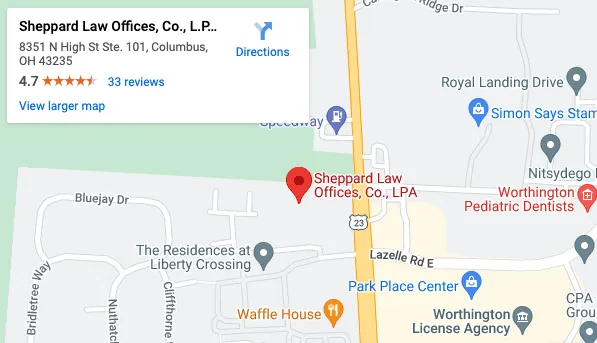Working from home has become more and more commonplace in business. With video chatting, screen sharing and call in conference lines, many office jobs are now being done remotely.
Previously, home offices in Ohio were considered a miscellaneous itemized deduction, however that has since changed. The Tax Cuts and Jobs Act, enacted in 2018 suspends miscellaneous itemized deductions, subject to a 2 percent floor for this period. This effectively made it harder to get a tax benefit from miscellaneous expenses such as un-reimbursed work travel, investment expenses and more. It also made it so fewer taxpayers are able to qualify for the home office deduction.
However, this doesn’t mean that you’re completely unable to write off your home office. If you’re self employed and report your business income on Schedule C, you may still be able to deduct expenses against your self employment income. The Home Office Deduction is very particular, and it’s key to understand what qualifies a home office.
- Regular and exclusive use – You can certainly write off a home office on your taxes, but it needs to be exclusively used as a home office. It doesn’t count if the room also doubles as a guest bedroom, or is used by other members of the house consistently. Essentially, it cannot be used for personal reasons in any way.
- Principal place of your business – It’s important to show that you use your home as the principal place of business. You’re allowed to conduct business at a separate location, but it’s key that your home is the primary location.You can deduct expenses associated with a free standing structure such as a studio or garage if you use it exclusively for business.
While these regulations apply to business owners, it’s still possible to claim a home office as a deduction if you’re an employee. There are similar rules that determine whether or not your home office is deductible. First, your home office use must be for the convenience of your employer. It must benefit your employer to have you work from home, simply being more convenient or helpful for you doesn’t count. Second, you cannot rent the space you use to work as an employee to your employer. That negates any claim you have to a deduction.
Once you’ve determined whether or not your home office is eligible for deduction, there are two different methods you can use to calculate your deduction.
- Actual-Expense Method – This method is much more precise, but also more difficult to calculate. The taxpayer must determine the percentage of their home that they use for business. This is most commonly done by determining the square footage used. Once that has been established, the next step is to figure out if the deduction is subject to the gross income limitation. If you’re planning on deducting otherwise nondeductible home expenses such as insurance, utilities and depreciation that are allocated to the business are limited to the gross income from the business.
- The New Safe Harbor Method – This method was established to help more people take this deduction. It was found that many people decided not to take the Actual-Expense method of deduction because they feared IRS scrutiny. The Simplified Method allows for a deduction equal to $5 per square foot of the home that you use for business, capped at 300 square feet. This means that the maximum deduction that can be taken is $1,500. Taxpayers cannot include depreciation, or other home expenses related to the business.
If you’re considerng writing off your home office, just remember to make sure you’re eligible. Tax laws can be confusing, and the last thing you want is an audit. If you find yourself in tax trouble, call Sheppard Law Offices. We focus on Ohio Tax and Bankruptcy law, and can help resolve your financial issues. Call us today!



